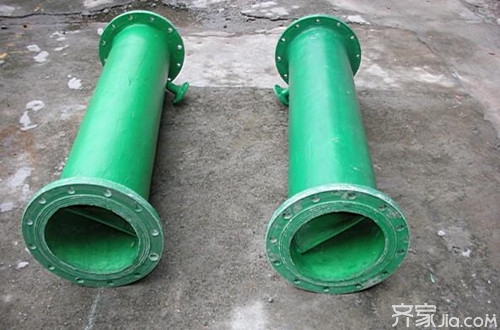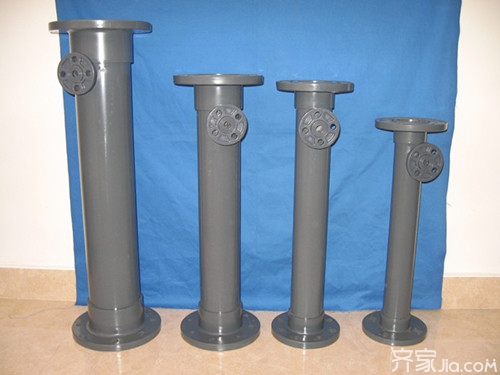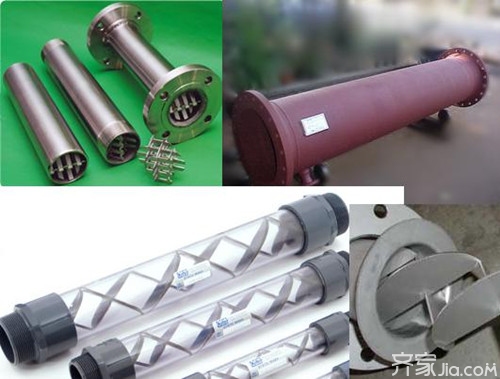With the continuous development of industrialization, pipelines play a huge role in the construction of our cities. The use of sewers, drainage facilities, and other facilities in the city is very widespread. It has brought great convenience to our lives. Now that our normal life can no longer leave the use of pipelines, the role of pipelines in our lives has become more and more important. The equipment that must be indispensable in our need for water is the pipe mixer . Now I will introduce the function of the pipe mixer and the model specifications of the pipe mixer . I hope to help everyone.

Pipeline mixer introduction
Pipeline mixer, also called tubular static mixer, is very effective in adding various coagulants, coagulant aids, ozone, liquid chlorine and acid-alkali neutralization, gas-water mixing, etc. in water supply and drainage and environmental protection projects. It is an ideal equipment for realizing instant mixing of various agents in the water area. It has the characteristics of fast and efficient mixing, simple structure, energy saving and small size. Under the condition of no external power, water flow through the pipeline mixer will produce diversion and cross mixing. The three effects of counter-rotating swirl make the added agent spread quickly and evenly to the entire body of water to achieve the purpose of instant mixing. The mixing efficiency is as high as 90 to 95%, and the dosage of the agent can be reduced by about 20 to 30%, and the water treatment can be improved. The effect of saving energy is of great significance.
The material of the pipe mixer is divided into three types: glass steel, carbon steel and stainless steel. The use of glass steel material has the advantages of easy processing, strong and durable corrosion resistance.
Pipe Mixer - Composition
Pipeline mixers are composed of pipes, nozzles, vortex chambers, perforated plates, and special-shaped plates, which are used to promote mixing. They are generally three-pipelined and used as a unit. There are many ways to mix the in-line mixers: nozzle, perforated, vortex, and profiled. The more common static propeller mixers are developed on perforated plates and profiled plate mixers, each with a 180-degree twisted fixed helical blade. The spiral blades in the adjacent two sections rotate in the opposite direction and are misaligned by 90 degrees. In order to facilitate the installation of spiral blades, generally the cylinder is made of two semi-circular, both ends are connected by flanges, and the gap between the cylinders is bonded with epoxy resin to ensure its sealing requirements.

Pipe Mixer - Features
The characteristics of the pipeline mixer are: the continuity of the work is not interrupted during the mixing process, the mixing distance and the installation space need to be very small, and the static mixer itself is a part of the pipeline and can be regarded as a special pipeline to avoid Due to the defects of the traditional pipelines, there are no moving parts in the pipeline mixer that will cause no wear and no subsequent maintenance costs. The installation methods and materials can be varied, and the mass transfer efficiency, high pressure drop, and energy consumption are very low. Mandatory mixing of the entire process logistics can greatly reduce the occupancy of space.
Pipe Mixer - Specifications
Pipeline mixers are: upvc, frp, carbon steel lining, stainless steel and other materials. Upvc material specifications: DN50-DN300, frp material specifications: DN200-DN1500, carbon steel lining material specifications: DN200-DN1500, stainless steel material specifications: DN50-DN1500. These are some of the more common models we use daily. The specifications of the pipe mixer can be partially adjusted according to the customer's different needs.

Pipe Mixer - Range
The scope of use of pipeline mixers includes mixing of urban domestic water and industrial water supply, mixing of urban domestic wastewater and industrial wastewater, mixing of water and wastewater in water supply and drainage, and input of liquid chlorine and ozone. Disinfection treatment, industrial wastewater treatment with acid-base neutralization, and mixed treatment of various industrial wastewaters. Pipeline mixers are used extensively in our lives and make a great contribution to the use of water in our lives.
Pipe Mixer - Installation
The installation of the pipeline mixer is very convenient, it is not limited by the direction, can be horizontal and vertical or other combinations. When the pipe mixer is installed on an overhead pipe, the pipe bracket needs to be fixed. The dosage position of various chemicals should be in front of the mixing unit of the pipe mixer and must be greater than 0.3 meters. The pipeline for the injection of pharmaceuticals can be designed by the customer and installed in accordance with the national water supply and drainage standard map.
Editor's summary: The above is a description of the pipeline mixer model specifications which can be adjusted according to the user's different needs, hoping to help friends who have this need! For more information, please continue to follow our website, follow-up will show more exciting content. You can also purchase more of your favorite products on Qijia Mall!
Leaking pipe
Tent Rope,Tent Tie Down Ropes,Tent Twisted Rope,Tent Climbing Rope
Baoying Yiliyuan Rope And Net Co.,Ltd , https://www.ylyropes.com